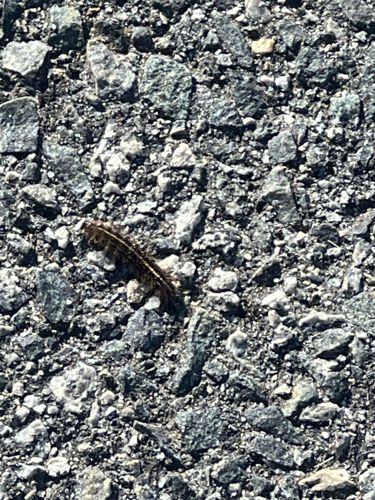Tiger Moth Caterpillar
Scientific Name: Arctia (genus is likely, species varies)
Order & Family: Order: Lepidoptera, Family: Erebidae (formerly Arctiidae)
Size: Typically 2.5 to 5 cm (1 to 2 inches) in length as a full-grown caterpillar.

Natural Habitat
Widely distributed in various habitats including gardens, woodlands, grasslands, fields, and urban areas. They are often found on or near their host plants.
Diet & Feeding
Herbivorous. Different species feed on a variety of plants, including broadleaf weeds, grasses, and garden plants. The specific diet varies greatly depending on the particular species of Tiger Moth.
Behavior Patterns
Most likely seen crawling on the ground. Caterpillars like this one are solitary and will spend their time eating and growing before pupating. Some species might be observed moving quickly, especially when disturbed. After pupation, the adult moths are typically nocturnal.
Risks & Benefits
Potential Risks: Some tiger moth caterpillars, such as the Woolly Bear, have stiff, barbed hairs (setae) which can cause skin irritation or allergic reactions in sensitive individuals if handled. They are generally not harmful. Potential Benefits: As caterpillars, they are part of the food chain for birds and other predators. As adult moths, they can be pollinators for certain plants, especially nocturnal flowers.
Identified on: 8/29/2025